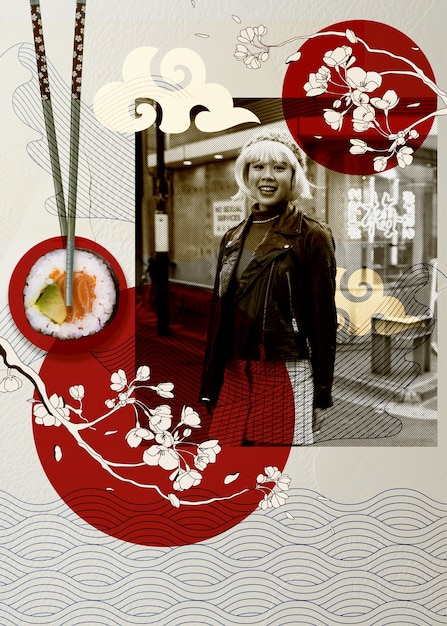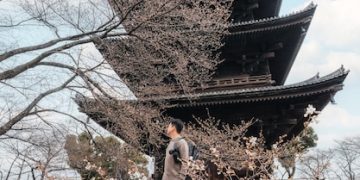From Manga to Screen: Exploring Japanese Drama Adaptations for US Fans

Japanese dramas frequently adapt popular manga series, offering US fans a unique gateway to experiencing beloved stories in a live-action format, often showcasing both faithful recreations and creative interpretations.
Japanese dramas, often called J-dramas, have gained popularity worldwide, especially among US audiences. A key reason for this is their adaptation of beloved manga series. Let’s delve into how these adaptations bridge cultural gaps and resonate with viewers.
The Appeal of Manga Adaptations in Japanese Dramas
Manga adaptations in Japanese dramas offer pre-existing fan bases and captivating narratives that translate well to television. They provide a unique viewing experience because they often combine the visual storytelling style of manga with live-action performance.
Familiar Stories, New Medium
One of the biggest draws of manga adaptations is the chance for fans to see their favorite characters and stories brought to life. Many popular manga series are adapted into live-action dramas, leveraging the popularity of the original material.
A Gateway to Japanese Culture
For US audiences, Japanese dramas offer a window into Japanese culture, traditions, and social norms. These dramas often incorporate elements of everyday life, providing insights into Japanese society.
- Visual Storytelling: Manga’s inherent visual style translated to live-action.
- Cultural Immersion: Exposure to Japanese customs.
- Emotional Resonance: Capturing the feelings of the original manga.
Manga adaptations in Japanese dramas resonate with US audiences through their ability to bring familiar stories to life and their capacity to offer a glimpse into Japanese culture. They act as a bridge, connecting viewers to the rich artistic expressions found in manga and drama, cultivating a global community.

Key Elements in Successful Manga-to-Drama Translations
Adapting manga to live-action drama involves careful consideration of several essential elements. These adaptations must capture the spirit of the original manga while making changes to the live-action format’s constraints.
Character Portrayal and Casting
Casting actors who closely resemble the manga characters both physically and in their mannerisms is crucial. Accurate character portrayal strengthens the bond with the audience and heightens the viewing experience.
Faithful Storytelling
Sticking to the main story arcs of the manga guarantees that fans’ core requirements are fulfilled. However, creative liberties and deviations can be taken as long as they stay within the spirit of the original work.
Success depends on balancing reverence to the source material with the unique requirements of live-action production. Here are the factors influencing such success:
- Accurate Casting: Actors who embody the characteristics of the characters.
- Capturing the Essence: Transmitting the mood and themes effectively.
- Balancing Act: Respecting the original plot while adapting to new formats.
Ultimately, effective story-telling preserves the manga’s initial charm while creating a compelling drama viewing experience. This method enhances the drama’s appeal, making certain it honors its roots while engaging viewers in new and thrilling ways.
Popular Manga Series Adapted into J-Dramas
Many manga series have successfully made the leap to live-action J-dramas, captivating audiences with their engaging characters and storylines. These series often span various genres, from romantic comedies to thrilling mysteries.
“Hana Yori Dango”
“Hana Yori Dango,” otherwise known as “Boys Over Flowers,” is a classic shojo manga that tells the story of a poor girl who gets into an elite high school dominated by a group of rich, influential boys. The drama adaptation has multiple versions across several countries and has been very popular.
“Nodame Cantabile”
“Nodame Cantabile” is a musical romance series with a talented but odd pianist and a perfectionist conductor. The J-drama variation exquisitely portrays the characters’ charm and musical enthusiasm.

These show how manga may be translated effectively into live-action dramas. Here are a few additional manga series that have been successfully adapted into J-dramas:
- “Itazura na Kiss”: A romantic comedy about an intelligent girl and a notorious attractive boy.
- “Death Note”: A psychological thriller in which a brilliant high school student finds a notebook that allows him to kill anybody whose name is written on it.
- “Great Teacher Onizuka (GTO)”: A comedy about a former biker gang leader who becomes a teacher.
Among the most well-liked manga series transformed into J-dramas are “Hana Yori Dango” and “Nodame Cantabile,” which have enthralled viewers with their interesting storylines and characters. These adaptations demonstrate how well-liked manga classics can be translated into the realm of live-action, drawing in viewers with their captivating plots and recognizable characters.
Challenges in Adapting Manga for US Audiences
Adapting manga into Japanese dramas for US audiences comes with unique challenges. Cultural differences, translation issues, and maintaining the integrity of the original work must be carefully managed to resonate with American viewers.
Cultural Nuances
Japanese culture is profoundly embedded in manga storylines and character interactions. It is critical to translate these cultural subtleties in a way that US viewers can comprehend and value while preventing misunderstandings.
Translation and Localization
The quality of translation and localization may have a substantial impact on how well US audiences receive Japanese dramas. To capture the emotional tone and complexities of the original story, accurate translations are required.
Some adaptations may face unique challenges. The key is to meet these head-on with a creative mix of solutions. Here are a few challenges:
- Tone Differences: Differences between Japanese and American humor.
- Subtleties in Cultural Context: Bridging the gaps of knowledge between the countries.
- Pacing Challenges: American audiences may react differently to Japanese pacing in stories.
Translating Japanese manga into a live-action drama for U.S. audiences is difficult. Creative and deliberate adaptations are required to account for translation, cultural differences, comedic cadence, and tone. A successful adjustment allows the stories to be easily understood and loved, bridging the gap between the two cultures.
The Impact of Streaming Services on J-Drama Popularity in the US
Streaming services have played a pivotal role in increasing the popularity of J-dramas in the US. Platforms like Netflix, Crunchyroll, and Amazon Prime Video make it easier than ever for American audiences to access a wide range of Japanese dramas.
Accessibility and Availability
Streaming services offer a broad selection of J-dramas with subtitles, lowering language barriers for US audiences. This availability helps to attract a new audience and promote the adoption of Japanese material.
Curated Content and Recommendations
Streaming sites use algorithms to give tailored content and recommendations to their subscribers. This feature aids in the discovery of new J-dramas and the growth of fan bases for certain series.
Streaming services are the engines behind the ascent of J-dramas in the U.S., making them well-known and accessible. Consider the following to fully understand their significance:
- Content Variety: Streaming platforms provide a wide range of genres and titles.
- Global Access: Streaming has broken down geographical barriers for viewing J-dramas.
- Community Building: Provides avenues for fans to engage and discuss their favorite shows.
To summarise, the introduction of streaming services has revolutionized the popularity of J-dramas in the United States. Offering a large selection of content, worldwide access, and community-building opportunities, these sites play an essential part in the ever-changing environment of global media consumption.
Future Trends in Manga-Based Japanese Dramas for US Fans
The future of manga-based Japanese dramas in the US looks promising, with several trends expected to shape the landscape. These trends include a greater focus on diverse genres, collaborations between Japanese and American production companies, and innovative storytelling techniques.
Diversification of Genres
While romance and comedy remain popular, there is a growing demand for J-dramas in other genres such as suspense, science fiction, and historical dramas. Offering a wide variety of genres will attract a broader audience in the US.
Co-Productions and Collaborations
Collaboration between Japanese and American production firms can help bridge cultural divides and produce dramas that resonate with a wider audience. These co-productions can take advantage of talent and resources from both countries.
Let’s anticipate a world when transcultural storytelling leads to the creation of compelling and varied manga-based J-dramas. Here are some trends that may change entertainment:’
- Integration of new technology such as virtual reality to improve storytelling.
- Hybrid Storytelling: A mix of old media techniques and newer technology.
- More inclusive storylines that appeal to multiple demographics.
In conclusion, manga-based Japanese dramas for US audiences are poised for tremendous expansion, propelled by inventive storytelling and broader collaboration. These developments have the potential to broaden the appeal of J-dramas, delivering an even more immersive and inclusive entertainment experience to global audiences.
| Key Point | Brief Description |
|---|---|
| 🎬 Adaptation Appeal | Manga adaptations offer familiar stories and a gateway to Japanese culture. |
| 🎭 Key Elements | Successful dramas balance faithful storytelling with creative adaptation. |
| 🌐 Streaming Impact | Streaming services boost J-drama popularity with accessibility and content variety. |
| 🔮 Future Trends | Expect diverse genres, co-productions, and innovative storytelling. |
FAQ
▼
Manga adaptations are popular because of their pre-existing fan base and ability to translate visual storytelling from manga to live-action, offering US fans familiar stories in a new medium.
▼
Manga adaptations struggle with translation issues, and cultural differences. It’s very important to translate and be careful of tone when adapting manga to U.S. audiences.
▼
Some of the most popular series to adapt are “Hana Yori Dango” and “Nodame Cantabile”. These series already have a huge fan base in Japan and are known around the world.
▼
Streaming services have made J-dramas much more accessible with English subtitles. Streaming services recommend tailored content, helping to discover new J-dramas.
▼
The inclusion of new technology such as virtual reality is one future trend. There’s also a push for hybrid storytelling and more accessible storylines appealing to people of many demographics.
Conclusion
In conclusion, the journey from manga to screen with Japanese dramas adapted for US fans is filled with potential and challenges. By focusing on faithful yet innovative adaptations, cultural understanding, and leveraging the power of streaming platforms, J-dramas can continue to captivate and resonate with American audiences for years to come.





